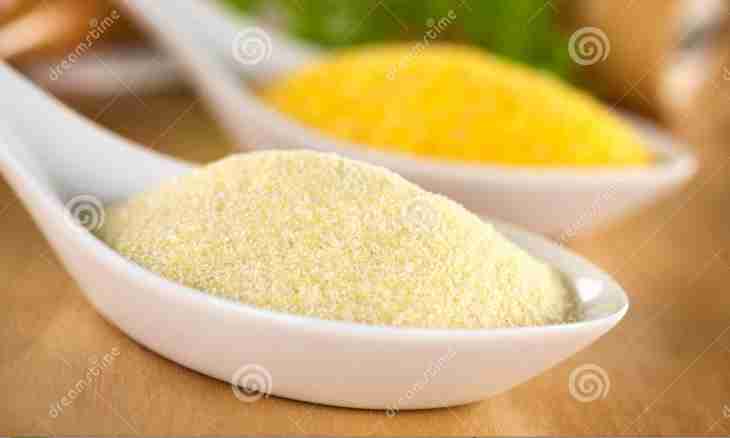Semolina is one of the cheapest grain. It is rich with gluten, starch and vegetable protein, easily boils soft and is quickly acquired by an organism. Once it was the main feeding up for babies, however nutritionists and pediatricians reconsidered the relation to this product.
What do semolina of
Raw materials for production of semolina is wheat of soft and firm grades. Grain is crushed to the sizes of 0.25-0.75 mm.
In the countries of the Middle East, the Mediterranean and the Balkan Peninsula do of kibbled wheaten grains булгур and couscous – grain which differ from semolina in larger size of grains and manufacturing techniques.
The quality of semolina depends on a grade of wheat from which it is prepared. Grains of firm grades of this cereal differ in the increased protein content – up to 22%. The semolina made from wheat of firm grades is suitable for preparation of dishes which shouldn't collapse - trickled pastries, souffle, puddings. Besides, it is added to mincemeat for increase in density as it well absorbs moisture. Such grain is marked letter T. The surplus of semolina does a product too viscous, "rubber" therefore important strictly to follow the recipe.
Wheat of soft grades contains 10-20% of protein. It is less sticky. The semolina made of it is marked as M and is suitable for casseroles, fritters, porridges. Besides, there is a semolina of the MT brand in which wheat of soft grades makes 80%, firm – 20%.
Properties of semolina
In comparison with other grain semolina is poor in useful substances, though contains a number of vitamins of group B and minerals: magnesium, sodium, calcium, potassium, phosphorus, iron. Its advantage is the high content of protein and low content of cellulose thanks to what it is easily acquired. Semolina porridge is recommended at a sore stomach and during the postoperative period.
Semolina quickly is cooked therefore it is necessary to cook semolina porridge no more than 2 minutes to keep as much as possible useful substances.
However semolina has also contraindications. It contains a lot of gluten. This protein differently is called gluten. At the people having a hereditary disease of a tseliakiya, gluten can cause heavy allergic reaction. Besides, its use sometimes leads to violation of nutritive absorption through mucous intestines. Semolina contains calcium-magnesium salt of phytin acid – phytin. This substance, on the one hand, prevents liver obesity, with another, connects calcium salts, without allowing them to come to blood. The excess of phytin leads to washing away of calcium from bones and vessels. Children whose main course in a diet is semolina porridge have rickets and a spazmofiliya. Therefore pediatricians as the first feeding up for babies recommend not semolina porridge, but vegetable puree.

